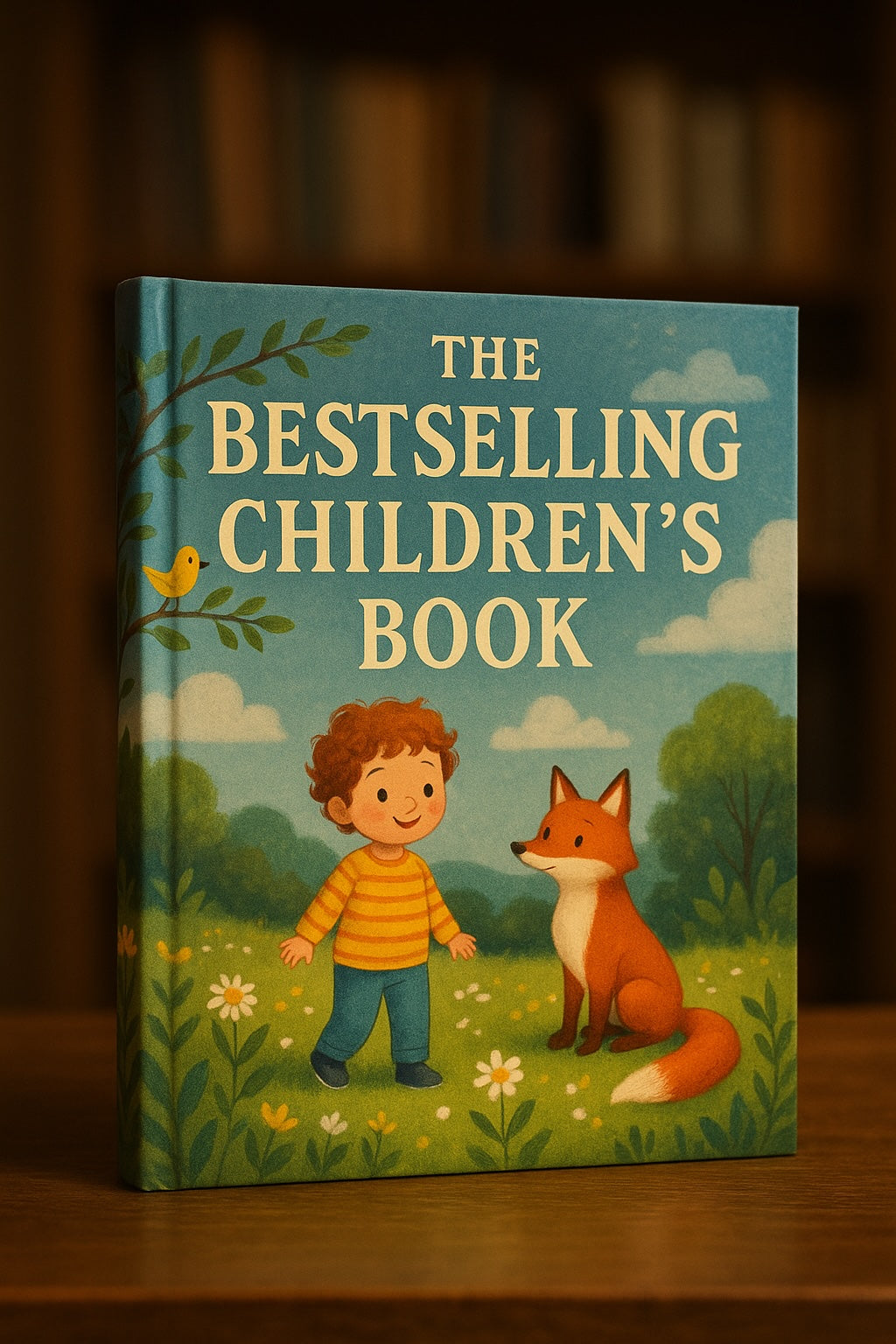
How to Turn Your Story Idea Into a Children’s Book That Actually Sells
Share
Every great book starts with an idea. Maybe yours came during a bedtime chat with your child, or while walking the dog, or in that strange half-awake moment when imagination runs wild. You might already have the perfect character in mind, or just a sentence that keeps replaying in your head.
Whatever your idea looks like right now, it can absolutely become a children’s book. The trick is learning how to take that spark of inspiration and turn it into something that not only delights children, but also catches the attention of parents, teachers and gift buyers.
It is not just about writing a cute story. It is about creating something people genuinely want to buy, read and share. And the good news is, you can do it even if you have never written a book before.
So, let’s turn that idea into a bestseller-in-the-making.
1. Start with the heart
Every successful children’s book has an emotional core. It might be friendship, bravery, curiosity or kindness. Before you write a single sentence, ask yourself: What is this story really about?
Children connect emotionally before they connect logically. They remember how a story makes them feel. If you can capture one clear emotion, your story will stay with them.
Do not overcomplicate it. Sometimes the simplest themes are the strongest. The Gruffalo is about cleverness and courage. The Very Hungry Caterpillar is about growth and change. The Rainbow Fish is about sharing.
Choose one theme and build everything else around it.
2. Build a main character children will love
Your main character is the heart of the story. They do not have to be human, but they need to feel real. Children should see a little bit of themselves in your hero.
Give your character a clear desire. It might be something small like wanting a friend, or something big like wanting to find a lost treasure. The story will follow their journey to get it.
Make them flawed too. Perfect characters are boring. A unicorn who always does everything right is not as interesting as one who loses her horn and has to find her courage again.
Think about what makes your character unique. How do they speak? What makes them funny, curious or brave? The more distinct their personality, the easier it is for readers to fall in love with them.
3. Keep the story simple
Children’s books do not need complex plots. In fact, they work best when the story is clear and easy to follow. Aim for a beginning, middle and end. That might sound obvious, but it is the key to pacing.
Start with a problem or situation that hooks the reader. Build tension in the middle as your character faces challenges. End with a satisfying resolution that ties everything together.
If you are unsure whether your story flows, read it aloud. If it feels smooth and rhythmic, you are on the right track.
4. Focus on rhythm and sound
Children experience stories with their ears as much as their eyes. That is why rhythm and repetition work so well. Read your sentences aloud and listen for flow.
You do not have to rhyme, but if you do, keep it consistent and musical. Bad rhyme distracts readers. Good rhyme feels like a song.
Even without rhyme, short rhythmic sentences make your story more memorable. Try alternating longer and shorter lines. Think of your words like waves that carry the listener along.
5. Add a sprinkle of humour
A touch of humour works wonders in children’s books. It does not have to be laugh-out-loud funny, just playful. A silly moment, a funny sound or a surprising twist can make your story sparkle.
Humour helps children connect with your book emotionally. It also makes parents more likely to buy it, because they enjoy reading it too.
Think of the books that children ask to read again and again. They are often the ones that make both child and adult smile every time.
6. Decide on your visual world
Before you move to illustration, take a moment to imagine what your story looks like. Is it bright and whimsical, soft and dreamy, or bold and quirky? The look and feel should match your tone.
You can use simple digital tools to explore styles early. Platforms like Gemini Banana are brilliant for visualising your characters and scenes quickly. Gemini is especially helpful if you want to keep your characters consistent across pages, something that used to be almost impossible without hiring an illustrator.
If you prefer to start sketching by hand, do that. The key is to visualise your story clearly. The more you understand your world, the easier it is to explain it to readers.
7. Create a mock-up or storyboard
Before jumping into the final book layout, make a rough version of your story with images and text placement. This is called a storyboard or dummy book.
You can do this easily in Canva by using a simple square or A4 layout. Add text boxes where you think the words will go and drop in placeholder images. It does not need to look perfect. The goal is to see how your story flows visually.
You might notice that one page feels too busy or another feels empty. Adjust as you go. This step saves time later when you move to final design.
8. Think like your reader
Remember who you are writing for. Children between three and six have very short attention spans, so keep sentences short and illustrations clear.
Parents are your buyers, so consider what makes them say yes. They want stories that teach gentle lessons, build confidence or encourage imagination.
Ask yourself: Would I buy this book as a parent? If the answer is yes, you are on the right track.
9. Test your story
Before publishing, test your story with real children. You will learn more in ten minutes of storytime than in weeks of editing.
Watch their reactions. Where do they laugh? Where do they lose focus? Do they repeat certain lines or point at specific pictures? Those are clues.
If they wander off halfway through, you might need to tighten that section. If they ask questions or want to hear it again, you know it is working.
10. Prepare to publish
Once you have a finished manuscript and illustrations, the next step is to publish. If you have followed the earlier guides, you already know that Amazon KDP is a great starting point.
Make sure your text and images are clear, your file is formatted correctly, and your cover is eye-catching. Add a short description that highlights your story’s message and age range.
Remember, self-publishing is not the end of your journey. It is the beginning of building your author identity.
Final thoughts
Turning your story idea into a book that sells is not about luck. It is about clarity, creativity and care. The best stories are the ones that come from genuine emotion and real curiosity.
Children do not care about trends or marketing. They care about how a story makes them feel. If your book brings joy, comfort or laughter, it will find its readers.
So take that idea you have been carrying around for too long. Give it time, love and a bit of structure. Watch it grow into something special. Because the world always has room for one more magical story, especially one written straight from the heart.
